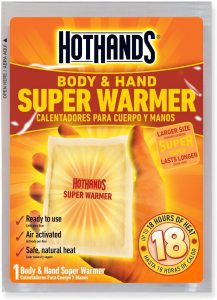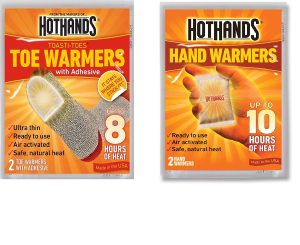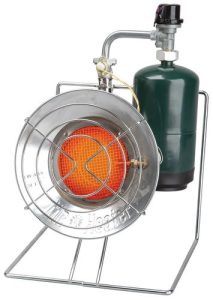Keeping Kids Warm On The Ice
Some days it can be hard to motivate ourselves and our kids to get out the door. Add freezing temps and the time it takes to get all the snow gear together into that mix and sometimes that’s enough to make even the most outdoorsy of us second guess our plans. We all need to get outside in the winter… there are so many fun things to do in the snow and out on the ice!
We want to share with you some tips on how to stay warm and make sure your kids are staying warm having a day on the ice! Read on for some simple tips to keep warm while out on the ice this season.
- Check the Weather
- Choosing a Location
- Dress for the Weather
- Pack Spare Clothing
- Fueling for Warmth
- Planning out the Extras
Check the Weather
A successful day out on the ice starts by picking nice weather days to bring the kids along. The weather has a huge impact on the length of time you can expect to spend outside. Limiting your family ice days to the warmer, less windy days will be your best bet to making it a longer more comfortable day. In relation to this, if you are heading out on particularly colder days, it possibly means less time out, so you will want to plan your day’s activities to fit the amount of time you’re predicting to be out. Talk to your kids about the weather and remind them of the importance of expressing to you if they are feeling cold or wet.
Choosing a Location
For a successful fishing day, you will want to narrow in on your plan for your fishing spot before you head out on the lake. Children are not going to have the patience you have in drilling several holes and wandering the lake chasing down the perfect fishing spot. In choosing a location, try to pick lakes that have close access to restrooms – near resorts – food, and alternative shelter if you’re on the ice without an ice house. Also try not to venture far onto the ice if you can help it, trudging across a large lake will wear out your little anglers at the beginning of the day, and then make it more challenging to pack up and head home at the end of the day. You will also want to consider what is a comfortable distance in portaging out for restroom breaks. After all those treats and hot chocolates, it’s very possible you will be making a few trips to the restroom throughout the day.
Dress for the Weather
Take caution to dress kids in the same layers recommended for an adult. To do it right, they should wear a wicking or quick-dry layer closest to the skin, have a cozy fleece layer over that, and then a snowsuit that has a cold-weather rating for your climate.
Layering up should be taught at a young age. Kids are like sponges and they will mimic what they see – so the days you’re out with the kids it’s best to lead by example and layer up.
Although it can be challenging to find children’s thermal clothing, and you may have to stray from being brand loyal to ensure you’ve got your kiddo geared and layered up appropriately – it will be worth the extra preparation in the long run! Nothing can kill a day out on the ice faster than a child complaining of being cold.
You could also add a layer of warmth and peace of mind by using Hot Hands or heated clothing, if you do – you will want to periodically check them to ensure they are still warm yet not to warm for your child. If you plan to be outdoors for a few hours, Hot Hands are nice because they do not heat up until opened and exposed to air, and once they are activated, the pads will give off heat for 8+hours!

 Pack Spare Clothing
Pack Spare Clothing
Try not to venture too far from your spare clothing and vehicle. You may need to have quick access to your spare set of dry clothes. Bringing extra mittens, snow pants, socks, and even boots is important if any of these items get wet.
If you can carry them in a backpack for quick access that is always a good idea.
Fueling for Warmth
Snacks and food will keep bellies full and bodies warmer. For longer outdoor adventures make sure to bring along some healthy snacks, and drinks. Granola bars, dehydrated fruit, hot chocolate, and sandwiches are all great ideas!
Planning for the Extras
While running around outside on the ice, having a bonfire for smores or setting up a play tent house can help provide warmth and shelter for the kids.
It’s amazing how kids will be warmer if they’re having fun! It could be the exact same conditions and temperature but if the kids are enjoying themselves they’ll handle the cold better.
Bringing a portable heater such as a sunflower heater is a great idea too, it will provide enough warmth to gather around and recharge especially if they are placed inside a portable ice house shelter. There are many options for portable heaters, below are a few examples.
There is always an element of unpredictability when you are taking others, especially children out on the ice with you. Keep attentive to a child’s comments and concerns throughout the day out on the ice. When the kids are ready to go home, it’s time to go. Forcing them to stay on the ice any longer than their attention span may make them dread the next trip. Some children won’t complain and that can be hard to navigate how cold they are. Watch for danger signs.
*Signs of frostbite are pale, grey, or blistered skin on the fingers, ears, nose, and toes. If you think a child has frostbite bring the child indoors and put the affected area in warm (not hot) water.
*Signs of hypothermia are shivering slurred speech and unusual clumsiness. If you think your child has hypothermia call 9-1-1 immediately.


 Pack Spare Clothing
Pack Spare Clothing
